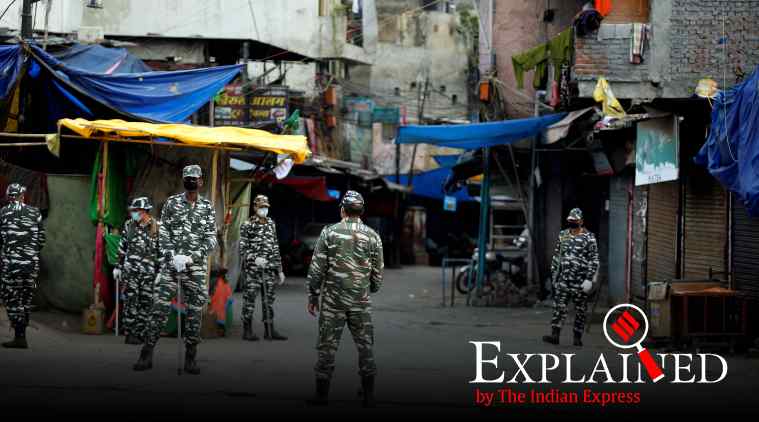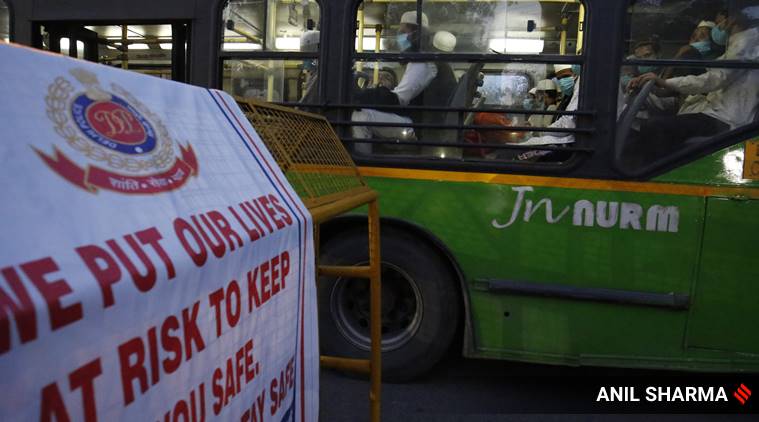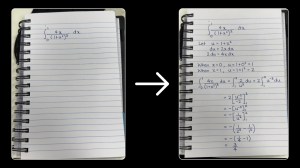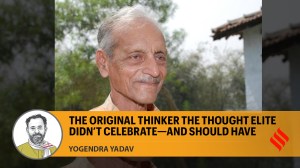
Tablighi Jamaat, which literally means a society for spreading the faith, is a Sunni Islamic missionary movement. The proselytising movement aims to reach out to ordinary Muslims and revive their faith, particularly in matters of ritual, dress, and personal behaviour. Read this story in Tamil, Bangla
How did the movement begin?
Its roots lie in the Deobandi version of the Hanafi school of jurisprudence. It was launched by Deoband cleric and prominet Islamic scholar Maulana Muhammad Ilyas Khandhalaw in 1927 in Mewat. Its emergence also coincided with Hindu proselytising movements.
While Maulana Ilyaz taught at the Mazaharul Uloom in Saharanpur in the mid-1920s, a few hundred kilometers away were the economically and educationally backward Meo peasants, mostly Muslims who were largely practicing Hindu traditions. Maulana Ilyaz began bringing Meo Muslims back into the fold of traditional Islam; he trained several young men from Deoband and Saharanpur and sent them to Mewat, where the Tablighi Jamaat established a network of madrasas and Mosque.
📣 Express Explained is now on Telegram. Click here to join our channel (@ieexplained) and stay updated with the latest
 People taken to hospital from Nizamuddin area in New Delhi on Tuesday. (Express Photo: Praveen Khanna)
People taken to hospital from Nizamuddin area in New Delhi on Tuesday. (Express Photo: Praveen Khanna)
How wide is its reach?
Story continues below this ad
In two decades after its launch, the Tablighi Jamaat had spread beyond the Mewat region. In the first Tablighi conference held in 1941, approximately 25,000 people from across North India attended.
Read | Contact tracing for Delhi cluster: 3 trains to South on the radar of Railways
After Partition in 1947, a Pakistan chapter was started in the town of Raiwind, Lahore. Currently, Bangladesh has one of the largest chapters. The Tablighi Jamaat also has a significant base in the United States and Britian, which has a large Indian subcontinent diaspora. It also has a presence in Indonesia, Malaysia, and Singapore.
 An official from Nizamuddin dargah said the premises are being sanitised thrice a day and announcements are being made to ensure no one visits.
An official from Nizamuddin dargah said the premises are being sanitised thrice a day and announcements are being made to ensure no one visits.
How does it promote Islam?
Story continues below this ad
The Tablighi Jamaat is based on six principles. The first is the kalimah, an article of faith in which the Tabligh accepts that there is no God but Allah and that Prophet Muhammad is his messenger. The second is salaat, or prayer five times daily. The third is ilm and dhikr, the knowledge and remembrance of Allah conducted in sessions in which the congregation listens to preaching by the imam, performs prayers, recites the Quran and reads the Hadith; the congregation also uses these sessions to dine together, thus fostering a sense of community and identity. The fourth principle is ikram-i-Muslim, the treatment of fellow Muslims with honour. The fifth is ikhlas-i-niyat, or sincerity of intention. And the sixth is dawat-o-tabligh, or proselytisaton.
Read | Kejriwal: 441 evacuated from Nizamuddin markaz COVID-19 symptomatic
What happens at the gatherings?
Between 8 and 11 am, the gathering is divided into groups of roughly 10 people each, and each group chooses a leader, preferably an elderly person. The group is given a destination, the distance depending on how much money the individuals have brought for this purpose. Between 3 and 5 pm, there is a talk on Islam for newcomers. After sunset, there is a recitation from the Quran, and on the life of the Prophet, with explanations.
What is the structure of the Tablighi Jamaat, as an organisation?
There is no defined structure, but there exists a hierarchic network of elders and mosques. Originally, it used to be headed by the Ameer, who would preside over the shura (council), the core of the organisation, and deal with important matters including international congregations known as Aalmi Ijtama.
Story continues below this ad
After the death of Maulana Inamul Hasan Kandhlawi, the third Ameer (1965-95), the post of Ameer was abolished, and Aalmi Shura (international advisory council) was appointed. After the death of Maulana Kandhlawi’s son Zubair ul Hasan Kandhlawi in 2015, the movement has been marked by factionalism.
What are these factions?
There are camps in India, Pakistan and Bangladesh. The “Nizamuddin camp” is headed by Maulana Saad Kandhalwi, great-grandson of Maulana Muhammad Ilyas, while a rival faction is based in Raiwind, Pakistan. Bangladesh, which hosts the biggest annual Aalmi Ijtama in Tongi, with around two million people attending, is another faction. In the Ijtama this year, the first phase was held on January 12 with the Tongi faction and the second phase on January 17 with the Nizamuddin faction.
Here’s a quick Coronavirus guide from Express Explained to keep you updated: What can cause a COVID-19 patient to relapse after recovery? | COVID-19 lockdown has cleaned up the air, but this may not be good news. Here’s why | Can alternative medicine work against the coronavirus? | A five-minute test for COVID-19 has been readied, India may get it too | How India is building up defence during lockdown | Why only a fraction of those with coronavirus suffer acutely | How do healthcare workers protect themselves from getting infected? | What does it take to set up isolation wards?

 Nizamuddin area cordoned off after several who attended Tablighi Jamaat event tested positive. (Express Photo: Praveen Khanna)
Nizamuddin area cordoned off after several who attended Tablighi Jamaat event tested positive. (Express Photo: Praveen Khanna)
 People taken to hospital from Nizamuddin area in New Delhi on Tuesday. (Express Photo: Praveen Khanna)
People taken to hospital from Nizamuddin area in New Delhi on Tuesday. (Express Photo: Praveen Khanna) An official from Nizamuddin dargah said the premises are being sanitised thrice a day and announcements are being made to ensure no one visits.
An official from Nizamuddin dargah said the premises are being sanitised thrice a day and announcements are being made to ensure no one visits.




































